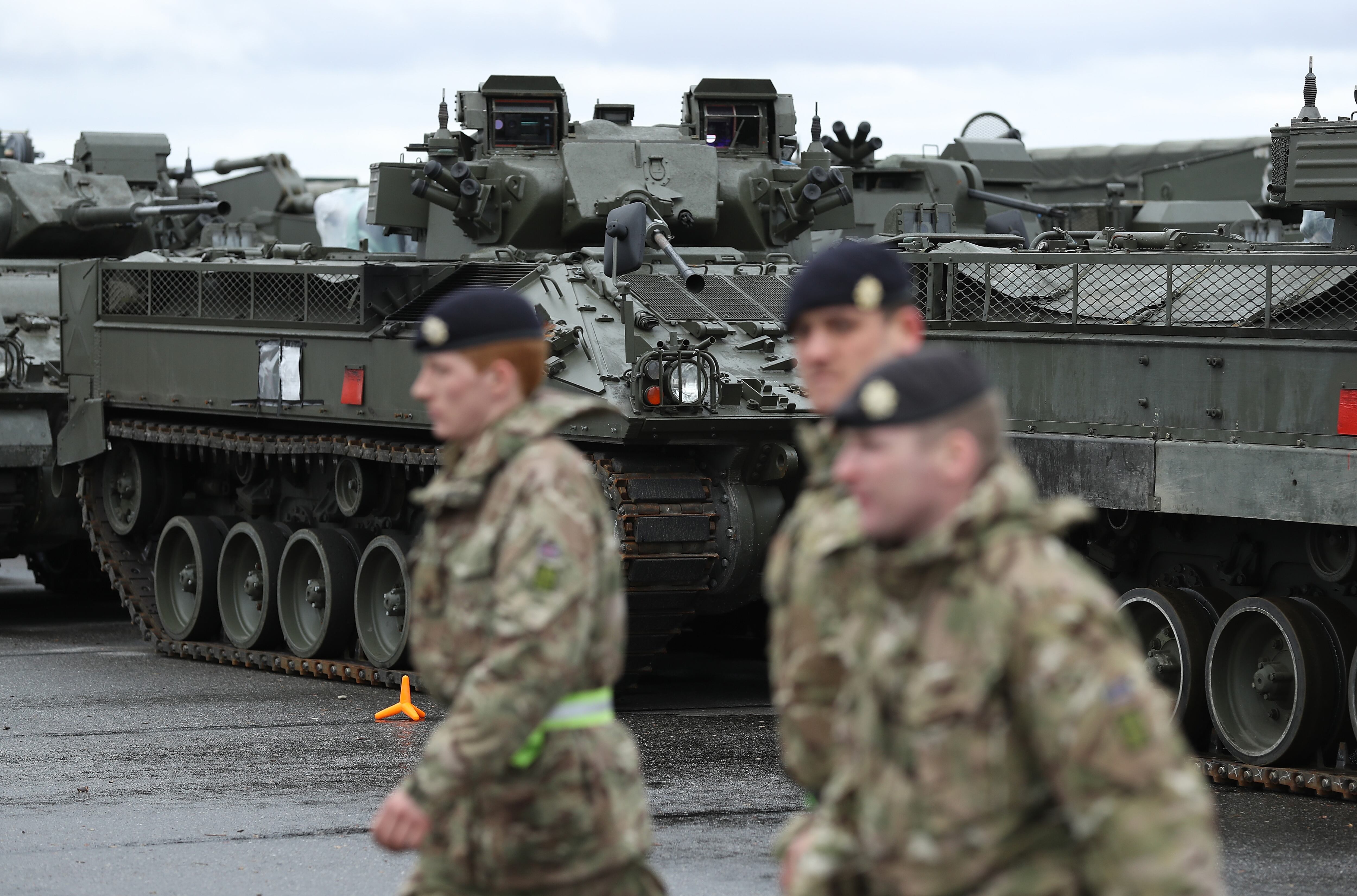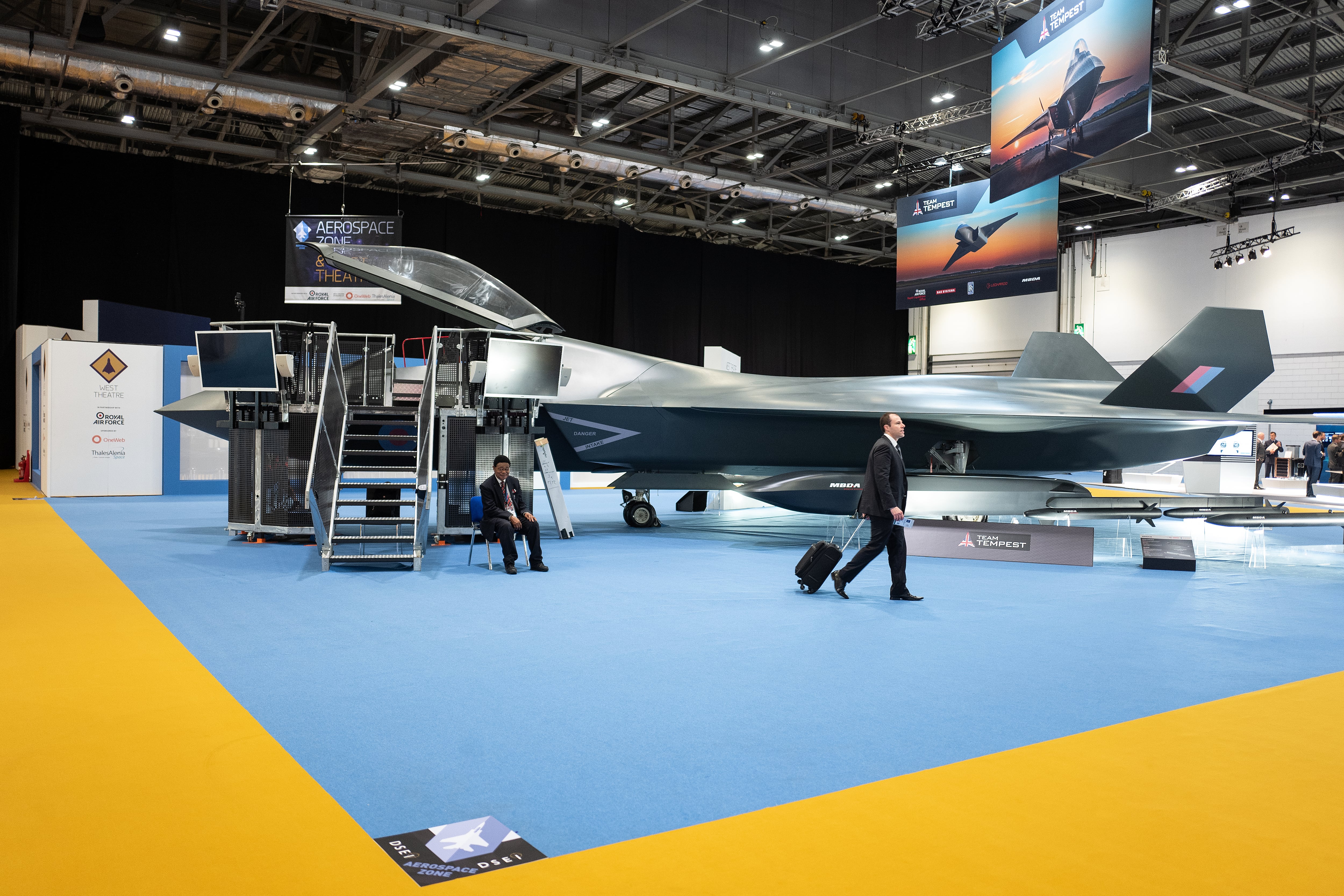WASHINGTON — A new defense spending plan from the British Ministry of Defence contains mixed news for the F-35 Joint Strike Fighter program, as London pivots its gaze to its future homegrown fighter design.
The document, released Monday, stated that the U.K. plans to “grow the [F-35] Force, increasing the fleet size beyond the 48 aircraft that we have already ordered.” However, the document said nothing about previously announced plans to buy 138 of the F-35B models.
On one hand, that’s a positive sign for the fighter jet’s prime contractor, Lockheed Martin: The pledge to procure more jets comes in the wake of discussions about whether the program could be capped at 48. On the other, it is far from Britain’s original pledge to buy 138 of the short-takeoff-and-vertical-landing combat jets to equip the Royal Navy and Royal Air Force. The F-35Bs are principally scheduled to equip two new, 65,000-ton aircraft carriers.
RELATED

Talking to Washington-based reporters on Monday, James Heappey, armed forces minister, did nothing to firm up the projected buy when asked directly about the 138 figure.
“We’ve committed to 48, we’ll buy 48,” Heappey said. “We’ve invested heavily in our own Future Combat Air System, which we’re developing with a number of other partner nations. I think that there’s a discussion on going over what the exact shape of the fast Air Force looks like in the future. But the 48 that were signed up for, the check’s in the post.”
While Air Marshal Richard Knighton, the deputy chief of the Defense Staff for capability, said in December that Britain knows it must “increase the number of F-35Bs to support the [Royal Navy] carrier through to its out-of-service date,” he expected to see “a definitive judgement around the total future fleet in the 2025 time frame.”
Justin Bronk, an air warfare expert at the Royal United Services Institute in England, said the government’s “stated position, without details on future order plans, is probably politically unsustainable unless concrete assurances have been made to, and believed by, U.S. counterparts in private,” particularly for the U.S. Marine Corps, which is the other major user of the F-35B model.
“The U.K.’s operational requirements across the whole joint force for credible [suppression of enemy air defenses], penetrating [intelligence, surveillance, target acquisition and reconnaissance], and strike capabilities cannot be met with 48 aircraft, especially given the latter will be heavily committed to supporting global carrier deployments,” Bronk added. “However, the lack of detail suggests funding for future orders has not yet been identified, as the government has decided to put national industrial sustainment — Tempest — ahead of operational needs in the combat air arena for the foreseeable future.”
The idea that the F-35 may see a cut due to the Future Combat Air System program, dubbed Tempest, is not a surprise. When the model for Tempest was unveiled at the 2018 Farnborough Airshow, one of the biggest questions was how the government could afford it while also maintaining its F-35 buy.
RELATED

According to the review, Britain has allocated £2 billion in development funding for Tempest over the next four years — a notable sum at a time the French-German-Spanish alliance to build a competing European fighter seems to be wobbling.
But the latest review emphasized Tempest not only as a future fighting capability but as a vital part of the defense-industrial base, saying the program “has already created over 1,800 new STEM jobs in over 300 companies nationwide, sustaining and supporting over 18,000 existing highly skilled jobs in the sector, as well as tens of thousands more in the wider supply chains across the UK.”
The report specifically called out Tempest as providing employment opportunities in Scotland, Wales and Northern Ireland.
For a decade, it’s appeared unrealistic that Britain could afford 138 F-35 jets, according to Bronk. “But the level of ambition and emphasis being signaled on Tempest probably means that the highest plausible U.K. purchase is now somewhere in the region of 60-72 jets,” he said.
Still, the F-35 remains fundamental for Britain’s plans, even if the 138 figure appears further away than anticipated. Heappey noted that the use of the plane among the American, Italian and Australian navies, among others, gives a common operating picture with which to work.
“There is going to be a community of F-35 nations that we would be mad to ignore,” he said.
Aaron Mehta was deputy editor and senior Pentagon correspondent for Defense News, covering policy, strategy and acquisition at the highest levels of the Defense Department and its international partners.








